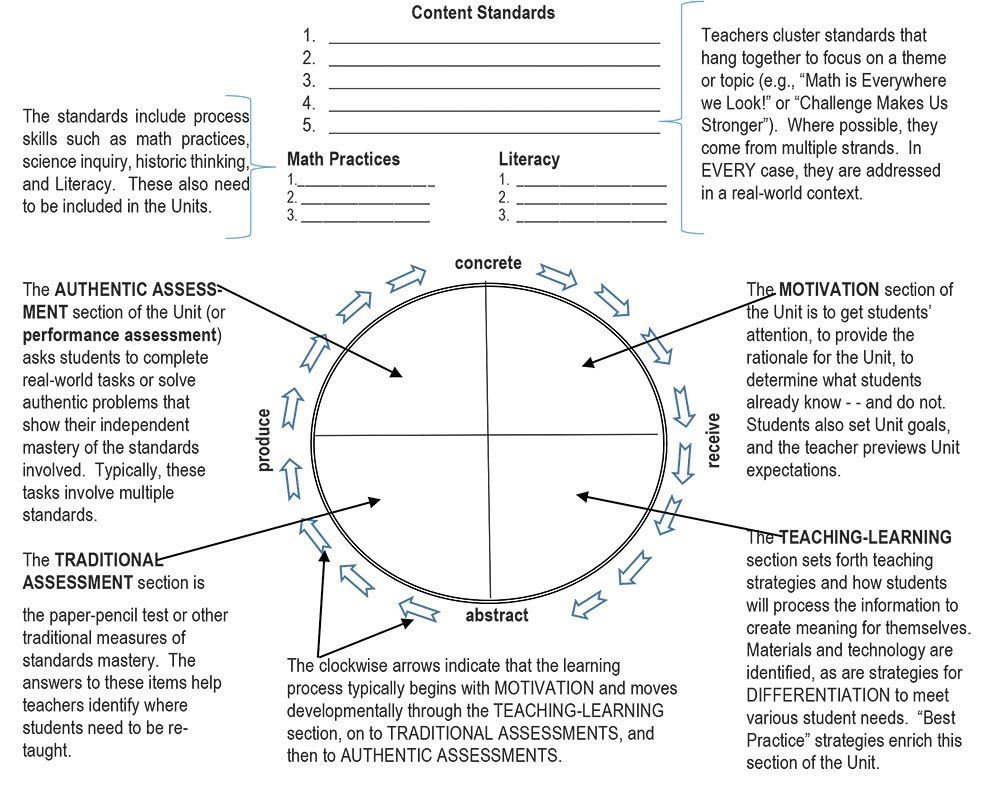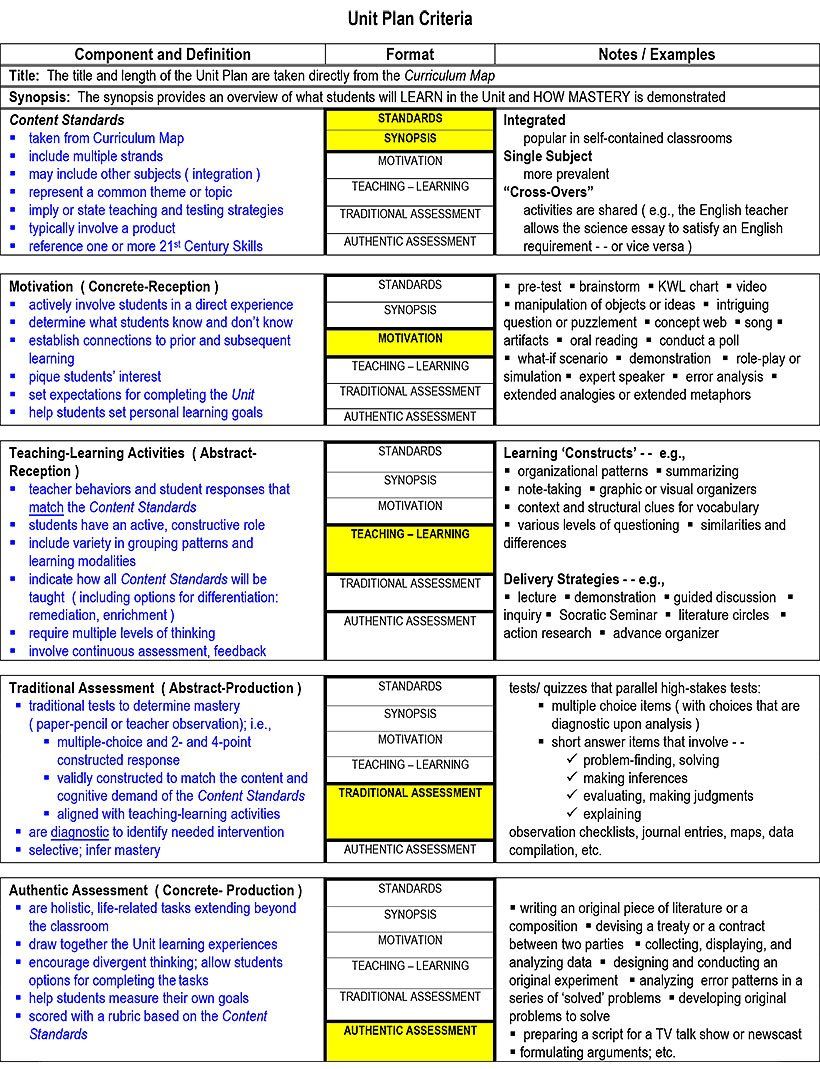“Best Practices” Unit Planning
The total quality of every school’s instructional program is only as strong as its least effective classroom. Unless there are substantive improvements in classroom instruction, adopting new standards and developing Curriculum Maps have no impact on the teaching process. More importantly, any improvements the classroom are most effective and longest lasting when they are developed BY TEACHERS in the context of their OWN teaching-learning activities.
EdFOCUS has developed a research-based Unit planning format to help teachers organize the delivery and assessment of classroom instruction. It uses techniques from the “best practices” research and incorporates the content standards set forth in the Curriculum Map. The EdFOCUS format specifies teacher behavior (strategies and techniques) and student responses (how students process the information). And unlike decontextualized workshops that focus on one or more “best practices” in isolation, the EdFOCUS training shows teachers how to build a network of “best practices” into their regular classroom routine.
In contrast to conventional Unit Plans, the EdFOCUS Units rely on three essential components:
- Constructivism -- based on the research findings that students retain only when they construct meaning for themselves; this is in contrast to filling in blanks or circling correct answers.
- Divergent problem-solving -- students deal with open-ended problems, using creativity to formulate and test possible and multiple solutions; this is in contrast to solving only textbook problems with canned solutions.
- Planned-for differentiation -- anticipating different learning needs ahead of time; this is in contrast to “one-size-fits all" and waiting until after-the-fact to provide remediation.
The following diagram is a synopsis of the EdFOCUS Unit Plan format. Each Plan is driven by the content standards and equipped with “best practices” techniques.

The learning theory behind the Unit Plan is in the intersecting lines that form the four sections. Vertically (Top to bottom), learning begins with concrete experiences (involving the standards) and matures to understanding the abstract. Horizontally (right to left) -- still thinking clockwise -- students first receive information about the standards, beginning with the concrete and developing into the abstract. In the far left, students produce mastery of the standards, first on a traditional measure such as a paper-pencil test and then with a performance assessment (or authentic task) that demonstrates their independent mastery.
The following table synthesizes the criteria for each section of the Unit Plan and provides sample strategies for actual Unit Plans. Sample Unit Plans at different grade levels and subjects are available for viewing. Call (330) 842-1116, or email kpeters@edfocus.org.

